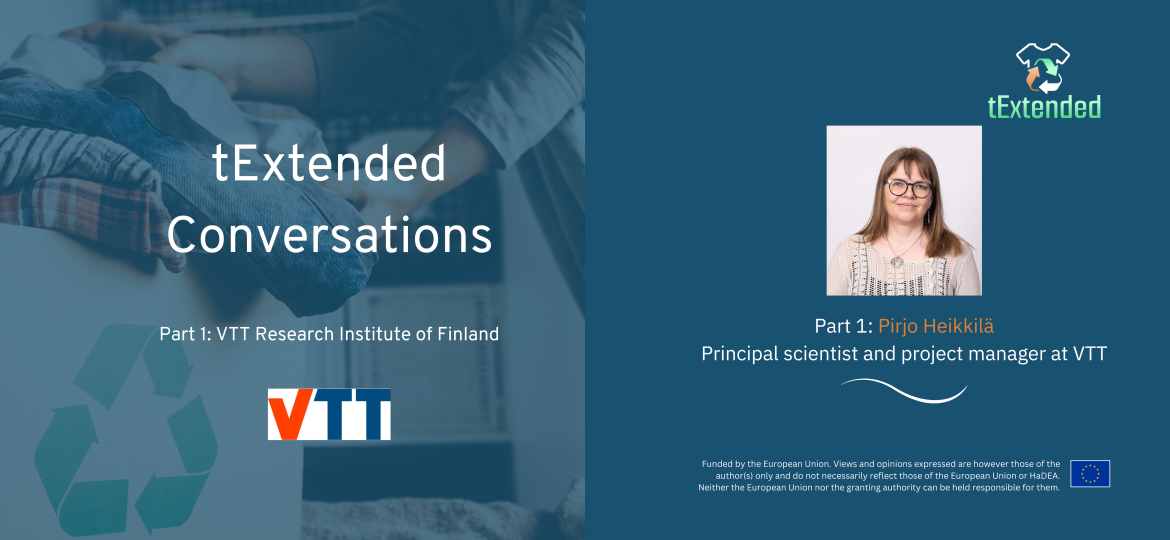
tExtended Conversations Series: VTT
tExtended is sharing today the first issue of the Conversations Series, where we speak with project partners about interesting details on their work in the project. Today we are speaking with Pirjo Heikkilä from VTT Technical Research Centre of Finland, who has given us an insight about coordinating the project while working on the tExtended research as well.
Thanks for speaking to us today. Could you start by introducing yourself and telling us where you are based?
I am Pirjo Heikkilä, coordinator of the tExtended project, and working at VTT as principal scientist and project manager in the field of circular textile research. VTT Technical Research Centre of Finland is a multidisciplinary research organization focusing on applied research. VTT’s headquarters are in Espoo, near Helsinki, but I am based in Tampere. There are tExtended project group members also located in Oulu and Jyväskylä.
Can you tell us something about the task that you are specifically working on in tExtended?
Personally, my role is the project management and coordination of the project, and I am also active in communication work and some research tasks and follow up also other research activities. VTT as partner is active in wide range of research activities from studies of future textile ecosystem to development of digital tools and textile recycling technologies.
What do you like the most about working on this project?
I have been involved in many national projects focusing on building circular solutions and circular textile ecosystem in Finland. It is very exciting to now work within a larger consortium across Europe, use and apply what we have learned in national projects on a wider scope, and also learn what kind of developments have been made in other countries.
What makes your organization ideal for participating in the research/activities of tExtended?
VTT has expertise and therefore also a good success rate in applying for EU projects. With our existing networks we were able to build strong consortium for extending textile circularity, and with our partners we are able to also build our own expertise and develop our solutions further.
What do you see as the biggest challenge for tExtended?
tExtended is an ambitious project aiming for a real scale demonstrator, which should show potential to reduce textile waste by 80% compared to the current situation. We need to develop digital tools and develop processes needed, and within demonstration we will include different types of discarded textile flows and demonstrate both efficient reuse and recycling.
What is one key thing you have learned from working on tExtended so far?
There are so many things to do before the textile systems will be truly circular. However, there are also lots of efforts done, multiple projects and other activities ongoing to build up knowledge, develop processes, and building infrastructure needed. I believe that we will see drastic change in how textiles are produced, used and cycled in Europe within the coming years.
How would you describe tExtended with three words only?
Ambitious, exciting, meaningful

